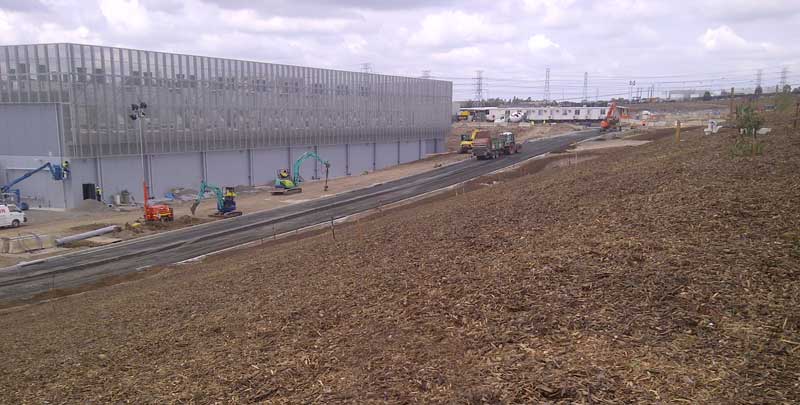Mulch can play a role in land re-vegetation projects and in particular, re-vegetation of slopes.
- Reductions in soil temperature of up to 10 Degrees Celsius under a 10cm layer of organic mulch by reducing the impact of solar radiation on the soil surface. This in turn can greatly improve seed germination and survival rates.
- On disturbed slopes, erosion occurs when water movement carries soil down the slope. This can result in a reduction of topsoil depth on the high areas of the slope (including loss of nutrients and organic matter). The soil may be completely lost, such as through entry into waterways, or else may accumulate on the lower sections of the slope.
- By slowing down rain driven water movement, moisture and organic nutrient levels can be maintained more evenly across the slope. This could be expected to result in higher germination and survival rates along with providing greater evenness in groundcover coverage.
- Higher moisture retention aids in the decomposition of the mulch, resulting in the addition of soil carbon and improved structure and fertility.
When choosing a mulch the main consideration is texture. Fine mulches hold better on slopes and in windy areas. They can retain more moisture than coarser mulches and will break down quicker, increasing soil organic matter.
Coarse mulches are more durable and slower to break down. They provide greater air and water infiltration into soil than fine mulches but may be more unstable on windy and sloping sites.
As a general rule mulches can be laid to a depth of 50 – 100mm. It is important to keep the mulch loose, to allow water and air to infiltrate into the soil.

